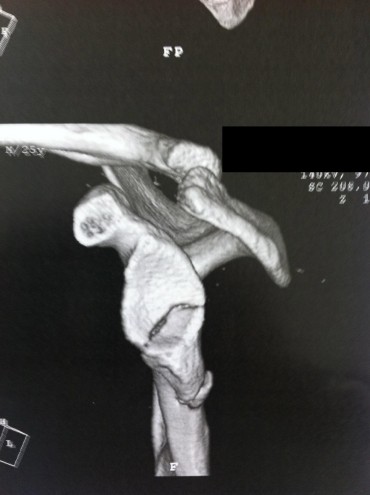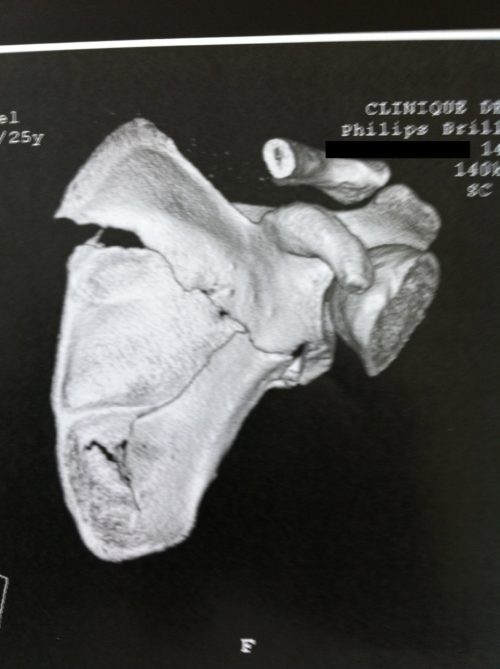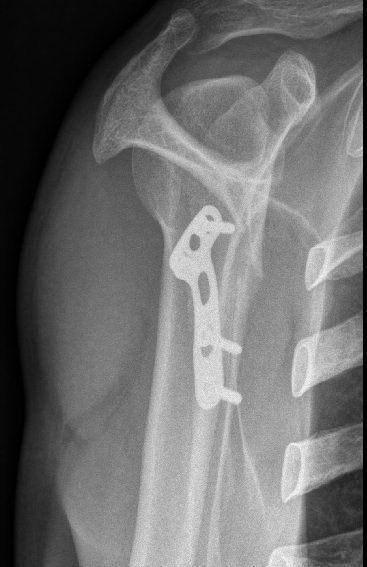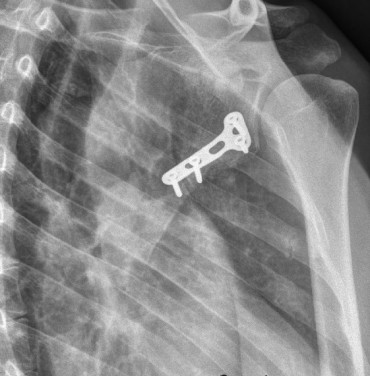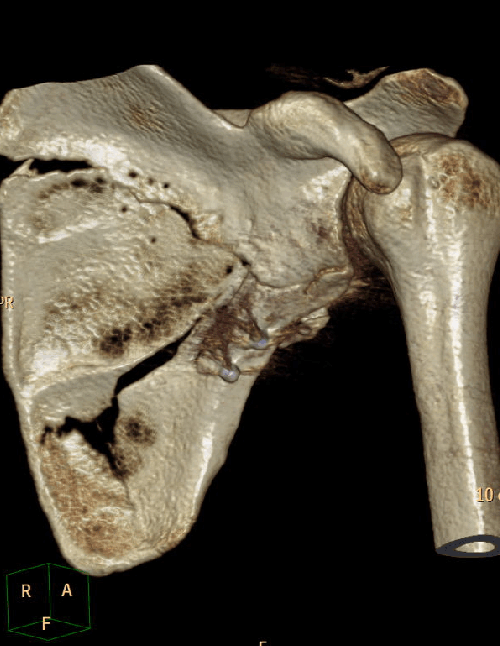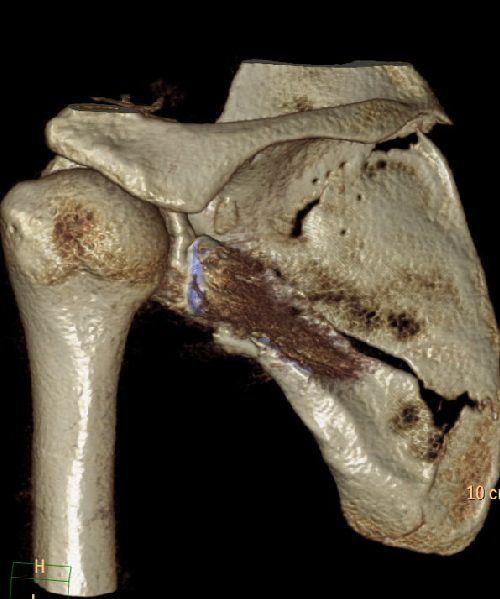the scapula is a thin flat bone (see anatomy of the scapula) that slides on the costal grill and articulates with the head of the humerus at the level of the glenoid.
This fracture is not exceptional in sport trauma and road accidentology, sometimes isolated or associated with other fractures including the collarbone making a ‘floating’ shoulder (the skeleton of the base of the limb is unstable).
In most cases these fractures only require rest, arm in sling so that the fragments do not get stuck together and then consolidate.
When the glenoid is reached and displaced and there is a risk of malfunction or early osteoarthritis of the glenohumeral joint, osteosynthesis may be indicated to reduce the fragments and fix them with screws and often a plate. The surgical approach and therefore the scar are posterior, in the back rather large or even realizing a V.
An intervention can also be decided in case of floating shoulder, other associated injuries and at the athlete of good level especially not to hinder the sliding of the scapula on the chest for example in the swimmer or the pitcher (see anatomy of the scapulothoracic joint).
Example of a surgical fracture:
Results at 1 month of osteosynthesis performed at 1 month (posterior):

